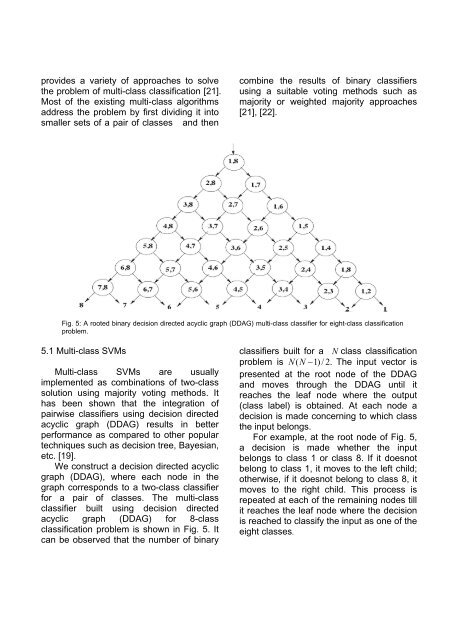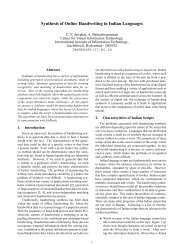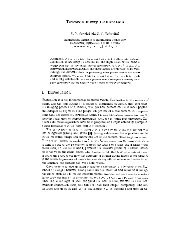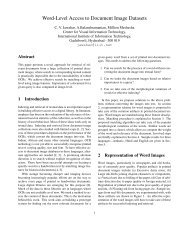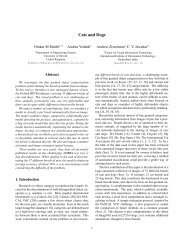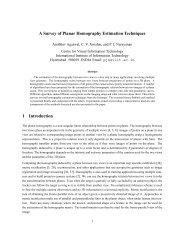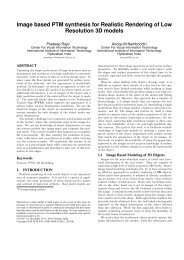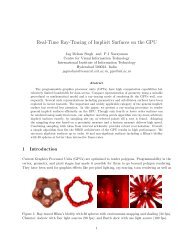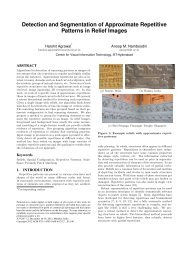Optical Character Recognition of Amharic Documents - CVIT - IIIT ...
Optical Character Recognition of Amharic Documents - CVIT - IIIT ...
Optical Character Recognition of Amharic Documents - CVIT - IIIT ...
You also want an ePaper? Increase the reach of your titles
YUMPU automatically turns print PDFs into web optimized ePapers that Google loves.
provides a variety <strong>of</strong> approaches to solvethe problem <strong>of</strong> multi-class classification [21].Most <strong>of</strong> the existing multi-class algorithmsaddress the problem by first dividing it intosmaller sets <strong>of</strong> a pair <strong>of</strong> classes and thencombine the results <strong>of</strong> binary classifiersusing a suitable voting methods such asmajority or weighted majority approaches[21], [22].Fig. 5: A rooted binary decision directed acyclic graph (DDAG) multi-class classifier for eight-class classificationproblem.5.1 Multi-class SVMsMulti-class SVMs are usuallyimplemented as combinations <strong>of</strong> two-classsolution using majority voting methods. Ithas been shown that the integration <strong>of</strong>pairwise classifiers using decision directedacyclic graph (DDAG) results in betterperformance as compared to other populartechniques such as decision tree, Bayesian,etc. [19].We construct a decision directed acyclicgraph (DDAG), where each node in thegraph corresponds to a two-class classifierfor a pair <strong>of</strong> classes. The multi-classclassifier built using decision directedacyclic graph (DDAG) for 8-classclassification problem is shown in Fig. 5. Itcan be observed that the number <strong>of</strong> binaryclassifiers built for a N class classificationproblem is N ( N −1) / 2.The input vector ispresented at the root node <strong>of</strong> the DDAGand moves through the DDAG until itreaches the leaf node where the output(class label) is obtained. At each node adecision is made concerning to which classthe input belongs.For example, at the root node <strong>of</strong> Fig. 5,a decision is made whether the inputbelongs to class 1 or class 8. If it doesnotbelong to class 1, it moves to the left child;otherwise, if it doesnot belong to class 8, itmoves to the right child. This process isrepeated at each <strong>of</strong> the remaining nodes tillit reaches the leaf node where the decisionis reached to classify the input as one <strong>of</strong> theeight classes.


